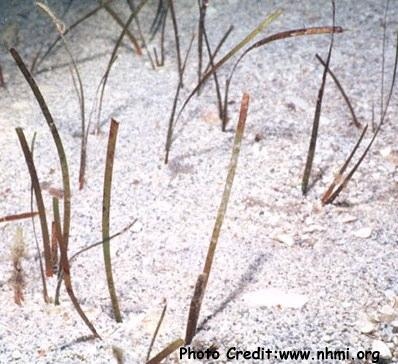
Halodule wrightii
Ascherson, 1882
Shoalgrass, Shoalweed
Likely Reef Tank Suitable
Likely Fish-Only Tank Suitable
More
Until recently, there has been only one genus of interest to aquarists in this grouping, and that has been the Red Mangrove. But some marine aquarists have entered into keeping seagrass systems; sometimes in refugia where surge devices can be used effectively. It presents a real biotopic challenge and therefore some of the more useable seagrasses such as those in the genus Halophila, Syyringodium, and Thalassia are described below. In fact, one of these called Turtlegrass shows up in the aquarium trade quite frequently when utilizing live rock coming from various Florida and Caribbean locations.
As for these seagrasses, they come from very shallow sandy/muddy areas, usually about 3 feet (1 m) deep, where tidal changes bring in nutrients and remove excesses from shoreline areas. Collectors often damage their submerged rhizomes, i.e., the root-like connections/runners between plants, making their acclimation in aquariums with deep sand/muddy beds sometimes very difficult. As a point of information, when receiving seagrasses they need to be planted as we do a tree - dig a hole in the substrate and place the species in it, then push in soil/sand/mud around its roots. Not simply pushing the seagrass specimen into the soft muddy sand. Damage to the rhizomes is probably the number one reason why various seagrasses are difficult to acclimate in aquaria.
As for mangroves, they do well in seawater or brackish waters and are easy to maintain in reef aquariums if given very bright light. Considered more a conversation piece than a device to reduce aquarium nutrients, as very little nutrients are removed via their root system.

